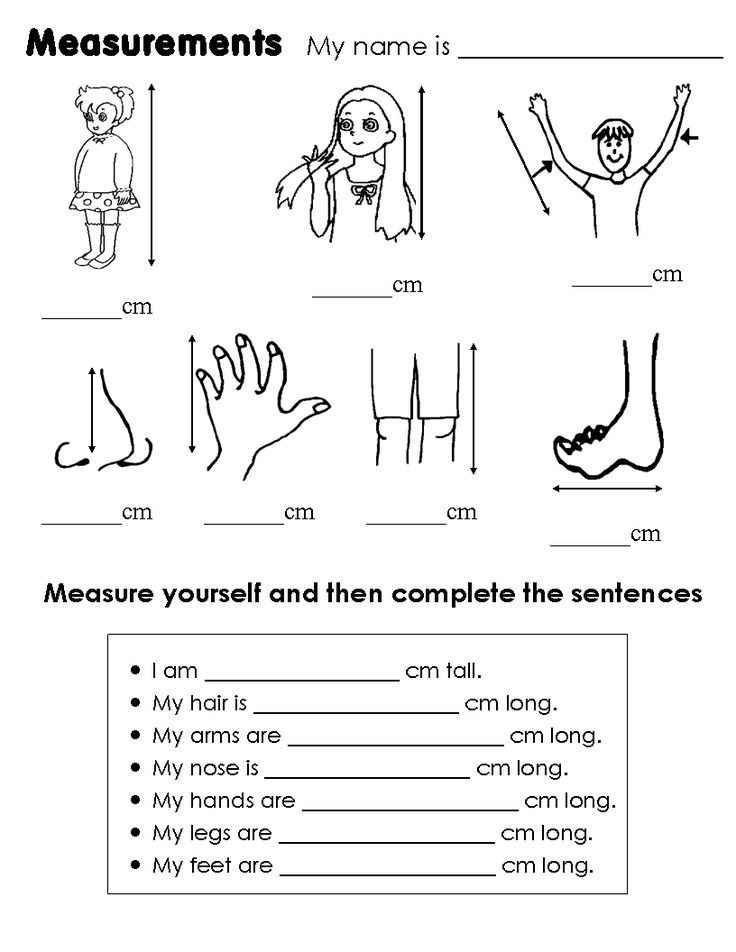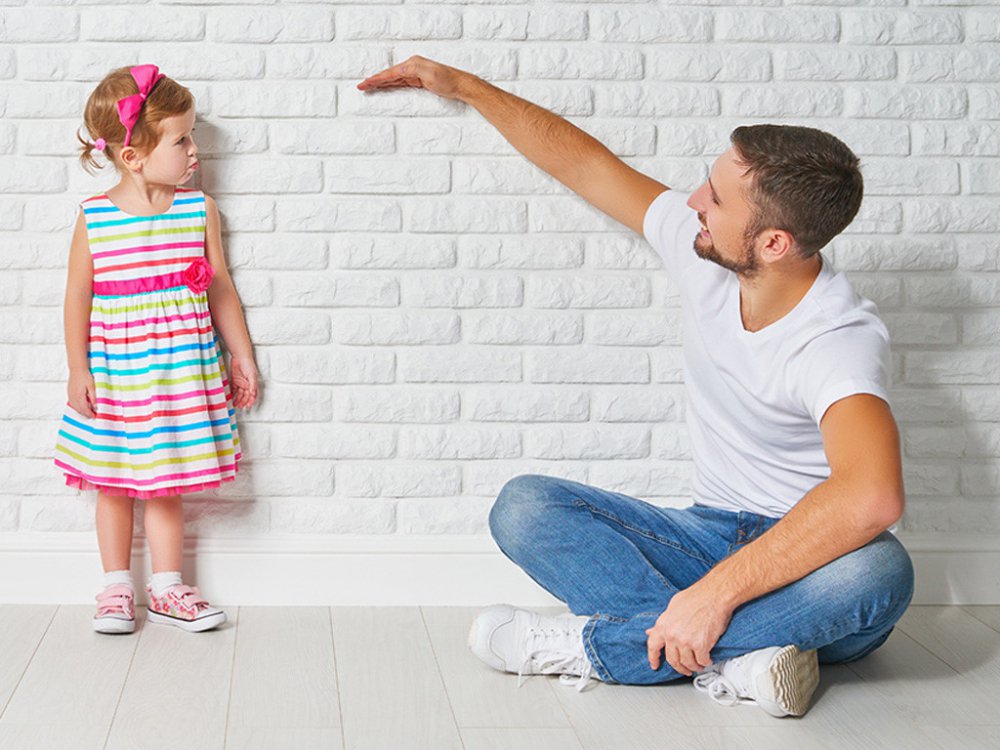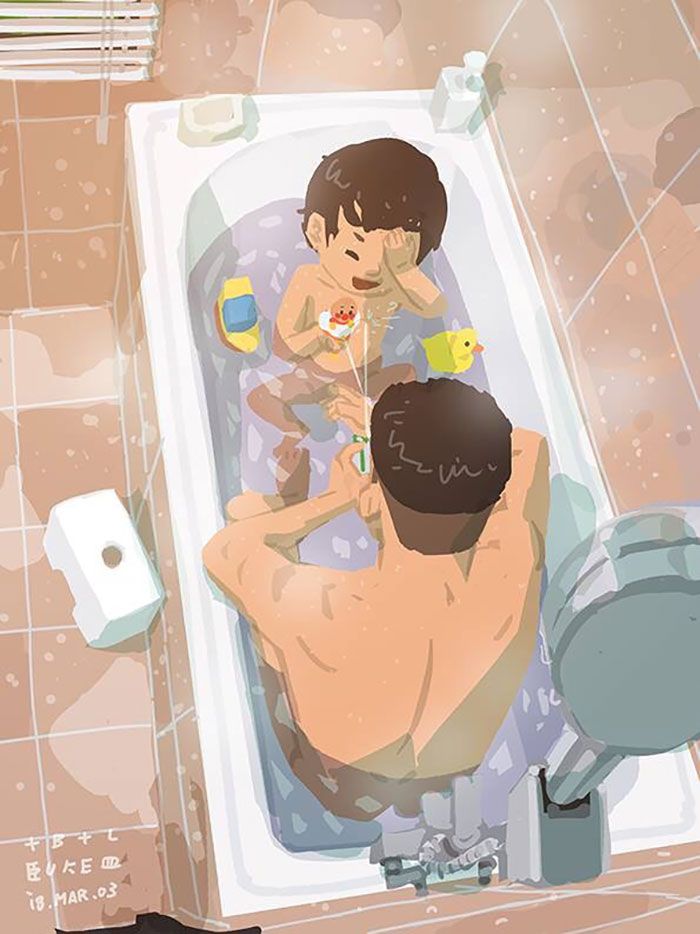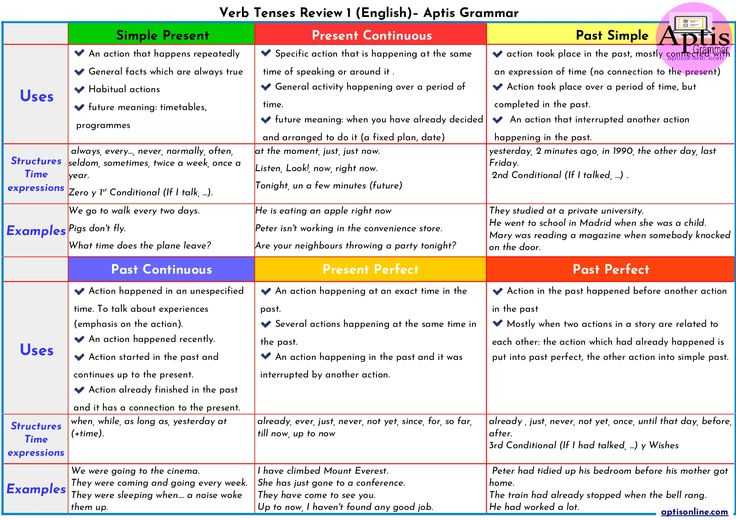How tall with my child be
Child height predictor: How tall your child will be
Child's sex
girl
boy
Child's age
Child's height *
Child's weight *
Mother's height *
Father's height *
Curious to find out how tall your child will be when they grow up? We can't see the future, but with a little math and science, we can make a pretty good guess about how tall they'll be when they're 18 – with a margin of error under 2 inches.
This calculator works for children age 2 and up. (Depending on your child's age, we'll use some or all of the information you entered in our calculations.) You may get inaccurate results for children who are exceptionally tall or are already taller than both their parents.
The Height Predictor is meant to be a fun tool, and doesn't guarantee your child will be this height when they grow up. If you're concerned about your child's growth, talk to their healthcare provider.
There are a few different methods of predicting how tall your child will be when they grow up. Our Child Height Predictor tool uses the Khamis-Roche method, which is based on a study conducted in the 1990s with about 400 participants.
The method takes a child's height, weight, and the average height of their parents, then uses ratios to determine how to calculate the child's predicted height at age 18. A previous method also used the child's skeletal age, which is how mature a child's bones are and requires an X-ray. But the Khamis-Roche researchers wanted to find a way parents could predict their child's height without having to get an X-ray taken.
If you want to test out other ways to predict your child's height at home, these are a couple methods you can try:
Two years times two
Children grow a ton in their first few years of life – in fact, their first growth spurt from baby to toddler accounts for about half of their adult height. One simple way to predict how tall your child will be when they grow up is to take their height at age 2 if they're a boy or 18 months if they're a girl and double it. (Girls grow a little faster than boys.)
(Girls grow a little faster than boys.)
This method has been around for a long time, but there isn't any scientific research about how accurate it is.
Mid-parental method
Another way to estimate your child's adult height is to add together the height of both parents and divide it by two.
Then, some methods say to add 5 inches if they're a boy and subtract 5 inches if they're a girl; others say to only add or subtract 2 ½ inches. There's a high margin of error with this method – it could be off by 4 inches.
Rebekah Wahlberg
Rebekah Wahlberg is an associate editor at BabyCenter, the world's number one digital parenting resource. She lives in Southern California with her silly dog Booger, where she enjoys hiking, yoga, and watching Netflix when she "should" be reading. Wahlberg is passionate about creating content that helps parents and parents-to-be equip themselves with everything they need to succeed.
Advertisement | page continues below
Child's Future Height Calculator
Developed by Medindia Content Team | Calculator reviewed by The Medindia Medical Review Team Last Updated on Jan 01, 1900
Want to know how tall your child will be as they grow older? Use this calculator to find out your childs expected adult-height.
Most parents are eager to know how tall their child will grow to be. Taller stature has been linked in many cultures to increased social status. There are many formulas that can predict the future height of your child by taking into consideration the height of the mother and the father.
To a large extent the height of your child is genetically determined. It is estimated DNA sequence variants determine about 80 percent of an individuals height. The other 20 percent is influenced by environmental factors and also on the nutritional status of the mother during pregnancy.
Advertisement
However, prediction can never be always accurate. In an interview Professor Tim Frayling who was involved in a large study on this subject said, Its common knowledge that people born to tall parents are more likely to be tall themselves, nevertheless he added, But Im surprised how complex the picture is. This goes a long way to fulfilling scientific curiosity that could have real impact in the treatment of diseases that can be influenced by height, such as osteoporosis or cancer.
Most boys reach their full height potential by the age of 16 to 17 years and girls by 14 to 15 years. This age marks the end of puberty. After 19 years chances of gaining any height would be very unusual.
Use this calculator to estimate your child's future height potential but ensure that the child is happy, active and healthy to attain their full potential in life and this will also help the child to grow tall.
Advertisement
Interesting Top Ten Facts About Height
- The rare condition that causes short stature called achondroplasia is due to defect in genetics and caused by mutation in the FGFR3 gene.
- It is estimated that there are more than 700 gene variants that determine the height of an individual.
- Growth of the long bones of lower limbs is primarily responsible for the spurt in height during puberty. At the end of puberty the hormones close the growth plates in the long bones.
- It is believed that in adulthood a male child will be double the height he was at 24 months.
 A girl will grow to be double of the height she was at 18 months. This is only an approximate calculation and not an accurate prediction.
A girl will grow to be double of the height she was at 18 months. This is only an approximate calculation and not an accurate prediction. - Another way to predict height is to take the average height of the parents and then, for boys add 2.5 inches or 6.5cm and for girls subtract 2.5 inches.
- Nutritious food is an important determinant for the final height of a child. A child that is well-nourished and active is likely to be taller than a child on a poor diet.
- Eggs are a good source of protein. Studies in developing countries have shown that children who are regularly fed with at least one egg a day are taller than children who do not get this daily nutrition.
- In developing countries it has been estimated that poor nutrition and hygiene cause an estimated 145 million children under age five to have stunted growth.
- There is no evidence that activities like hanging, climbing or swimming can increase height.
- Non-genetic factors that determine growth and height of a child also include the mothers nutritional status during pregnancy and habits like smoking or use of hazardous substances.

Advertisement
Comments should be on the topic and should not be abusive. The editorial team reserves the right to review and moderate the comments posted on the site.
Recommended Reading
Adult Immunization
An adult's need for immunization is very specific and is determined by certain factors. A consultation with a doctor will help a person decide on the vaccinations that is required for the individual.
Yoga For Health - Animation
Animation for yoga asanas. Yoga helps to maintain a healthy balance of the body,with its set of movements or exercises
Human Growth Hormone
Encyclopedia section of Medindia gives a preview about Human Growth Hormone (HGH)
Grow as tall as you want
The mantra to increase your child's height is by giving a nudge to your child's Growth Hormone by ensuring a healthy diet, regular exercise and adequate sleep.
How to look tall
Appearing to be tall than you actually are isn't as hard as you'd thought.Here are some clever tactics for you to appear taller.
Daily Calorie Requirements
Are you health conscious? If yes, go ahead to find out your approximate daily calorie requirement, which varies depending on the lifestyle and activities. This calculator indicates an approximate calorie requirement for a person having a normal ...
Daily Water Intake
Calculate how much glasses of water you need to drink each day to avoid dehydration using this daily water intake calculator.
Height and Weight for Children
The height and weight calculator is a useful tool to ascertain the ideal height and weight of the children according to age and gender.
Health Screening Guidelines
Use these Health Screening Guidelines that list the medical conditions you should be screened for in your next health check-up.
Consult Pediatricians Online
How to find out how tall a child will be when he grows up: calculator and growth rates
Health
- Photo
- Photo Alto / Legion
pediatrician
In the first year of life, children literally grow by leaps and bounds hours and grow 25 centimeters by their first birthday. Growth hormone is produced in the endocrine gland, which is located in the brain. This happens when the baby is sleeping, which is why healthy and restful sleep is so important.
“From one to three years old, a child on average gains 10 centimeters a year,” says pediatrician Marina Fedyushina. - From three to six years, the growth rate decreases: the mark on the stadiometer increases by about 4-5 centimeters.
Until the age of 10, there is a slight slowdown, and already from the age of 11 (for girls) and from 13 years (for boys) there is a sharp jump in growth rates. After 40 years, we begin to decrease a little. This is due to fluid loss from the intervertebral discs.”
Place of birth matters
Obviously, growth is due to heredity. It is the genes that determine whether your son will be teased by Gulliver, and your daughter by Thumbelina. Not so simple.
“In 2014, American scientists conducted a large-scale study on the influence of genes on human growth,” says Doctor of Biology Antonina Volkova . - The project was carried out by specialists from 300 institutes, and the number of participants reached 250 thousand people. The experiment proved that human growth is influenced by various gene variations, and there are about 300 hundreds of them. It is important what were your ancestors (not just parents), from whom you got a certain appearance.
The scientists also found out that the northerners are much taller than the inhabitants of the southern regions. For the first time, the German biologist Karl Bergman told the world about this, he said that a hot climate contributes to a slowdown in growth processes.
- Photo
- Photo Alto/Legion
Growth Formulas
Doctors have come up with a few simple formulas that can be used to predict where in the ranks your child will stand in physical education classes.
1. The most common formula
Boy height (cm) = (Mother's height + Father's height) * 0.54 - 4.5 (cm)
Example: (165 + 183) * 0.54 - 4.5 (cm) = 183 .4 (cm)
Girl's height = (mother's height + father's height) * 0.51 - 7.5 (cm)
Example: (159 + 173) * 0.51 - 7.5 (cm) = 161.8 (cm)
2.
 Dr. John Hawker's formula
Dr. John Hawker's formula An employee of one of the largest private medical centers in the world, the Mayo Clinic, proposed the following calculations:
The boy's height is = (Father's height + Mother's height): 2 + 6.4
Example: (183 + 165): 2 + 6.4 (cm) = 180.4 (cm)
Girl's height = (Father's height + Mother's height): 2 - 6.4
Example: (173 + 159): 2 - 6.4 (cm) = 159.6 (cm)
Boy's height = (Father's height + Mother's height * 1.08): 2
Example: (183 + 165 * 1.08): 2 = 180.6 (cm)
Girl's height father * 0.923 + mother's height): 2
Example: (173* 0.923 + 159): 2 = 159.3
- Photo
- Image Source/Legion
reasons:
-
Emotional overloads,
-
Irrected nutrition,
-
Chronic diseases,
-
Climatic and geographical conditions,
-
Chromosomal disorders (for example, Daun's disease), 9,0002,
003
-
malformations of bones.

4. The Smirnov-Gorbunov formula
The authors of the sensational article "Short stature in childhood" Professor Vladimir Smirnov and endocrinologist Gleb Gorbunov also wondered what height a child would have in adulthood. This formula allows an error of as much as 8 cm:
Boy's height = (Father's height + Mother's height + 12.5): 2 ±8
Example: (183 + 165 + 12.5): 2 ±8 = 188.25 (cm) or 172.25 (cm)
Girl's height = (father's height + mother's height - 12.5): 2 ±8
Example: (173 + 159 - 12.5): 2 ±8 = 167.75 (cm) or 151.75 (cm) )
5. The formula for the growth of a child per year
According to the World Health Organization, the normal height of a one-year-old boy is considered to be from 71 to 80.5 cm, for girls - from 68.9 to 79.2 cm. If you want to know what will be your baby by the age of 20, it is necessary to add 100 cm (for a boy) and 95 (for a girl) to the height that the baby reached at 12 months.
Based on this formula, boys can only grow to 180. 5 cm and girls to 174.2. How then to be with Ivan Urgant, who has reached a height of 195 cm?
5 cm and girls to 174.2. How then to be with Ivan Urgant, who has reached a height of 195 cm?
Professional sports can also change appearance. If you don’t want a modeling career for your child, then feel free to give it to gymnastics: a serious load on the joints and bones, spinal injuries contribute to problems with the development of the skeleton, children grow poorly. Although the famous gymnast Laysan Utyasheva has grown to 167 centimeters, this is quite a normal height for a girl. But swimming, football, hockey, tennis, volleyball will allow you to become taller, faster and stronger.
Pediatricians themselves do not particularly trust these methods of calculating height.
“There will always be errors,” continues Marina Fedyushina. - The growth rate, in addition to heredity, is influenced by various factors. First of all, this, of course, is the state of the endocrine glands. Do not discount nutrition and lifestyle. Lack of vitamins, smoking and alcohol slow down the growth of the child”
Yuliya Evteeva
For boys and for girls.
The height and weight of the child are the main indicators of his physical development. That is why immediately after the birth of the baby, it is imperative to measure the weight of his body and the length of the body and continue to weigh himself daily at the same time until discharge from the hospital.
There are many factors that affect the physical development of a child, for example:
- heredity (you should not expect a basketball player son from short parents) and child development)
- physical activities (for example, tennis, volleyball, basketball contribute to height increase)
- child health (children with chronic diseases often lag behind their peers in physical development)
- psychological situation in the family, at school, lack of sleep, etc. d.
How to understand what is the norm?
The All-Russian Health Organization recommended special tables for matching the height and weight of children, or as they are called, centile tables. At each examination, the pediatrician measures the height and weight of the child, compares the obtained values \u200b\u200bwith the standard indicators. Such tables allow you to identify obvious pathologies, for a more accurate analysis, the doctor calculates additional indicators using special formulas. 91
At each examination, the pediatrician measures the height and weight of the child, compares the obtained values \u200b\u200bwith the standard indicators. Such tables allow you to identify obvious pathologies, for a more accurate analysis, the doctor calculates additional indicators using special formulas. 91
 55 ± 0.79
55 ± 0.79  80 ± 0.80
80 ± 0.80 )
 85 ± 1.53
85 ± 1.53  32 ± 6.40
32 ± 6.40  70 ± 7.50
70 ± 7.50 0019
There is no need to panic if there is a minimal discrepancy with the indicated values in the table, and here's why:
- many other factors . Sometimes parents of premature babies mistakenly use a standard table for comparison, while there are special tables for assessing the development of children born prematurely.
- The rate of growth and weight gain is unique for each child . In the first year of life, babies develop in leaps and bounds. For example, during the period of introducing complementary foods, the weight of the baby may not reach the “norm” due to adaptation to a new type of food, and not because of pathology.
This does not mean that deviations from the norm should be ignored , but it is better to regard them as an occasion to pay attention and consult a specialist in order to identify possible health problems, or to make sure that there are none.
What can cause obvious deviations from the norm?
Earlier we talked about minor deviations from the norm and that there is no need to be scared if your child is not growing and gaining weight strictly according to the chart. But what to do if the values of the essential have gone beyond the limits of the permissible parameters , or are at the intersection of the norm and pathology?
Reasons for possible deviations can be divided into two groups:
1. Non-endocrine:
- Constitutional stunting . Or in another way, the syndrome of late puberty. One of the variants of the norm, when the puberty jump occurs later than in other children.
- Family short stature . It has a hereditary predisposition, in the family of such children there are relatives with short stature. Growth retardation manifests itself from early childhood.
- Prematurity, intrauterine and postpartum injuries.

- Genetic syndromes . As a rule, they have many clinical manifestations, one of which is growth retardation.
- Chronic diseases of the cardiovascular, bronchopulmonary systems, gastrointestinal tract, as well as anemia.
- Fasting .
- Taking certain medications .
2. Endocrine:
- Growth hormone deficiency . Biologically active substance, which is the main regulator of the growth process after 2 years.
- Thyroid hormone deficiency . More often of a congenital nature, it is clinically characterized by a delay in physical and intellectual development from birth.
- Type 1 diabetes mellitus . A disease in which, due to insulin deficiency, the flow of glucose into the cells of the body is impaired, the so-called. "starvation" of cells, as a result, growth rates slow down.













